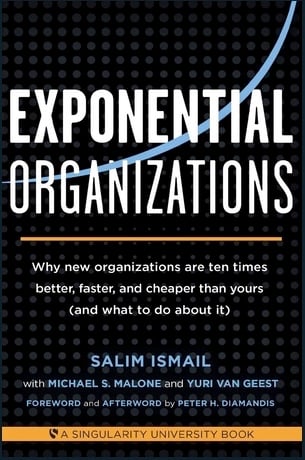Ever been let down by a business idea you thought had so much potential?
The only thing worse than a poorly developed business idea is investing in a poorly developed business idea. With pressure from all fronts, easy to get excited. You see a gap, get an idea, and boom — you’re off. But without clarity, you’re flying blind.
And that's how thousands of startups and new ideas go belly up year on year. Clayton Christensen of Harvard Business School called it: 95% of product launches fail — not because the ideas were bad, but because no one stopped to ask: What makes this a great opportunity?
Don't make the same mistake.
Nobody wants to spend time, energy and resources on a product or service that doesn’t fly. So how do you ensure your new business idea is poised to win when it enters the market?
Insight: CEOs and entrepreneurs often find themselves over-invested in bad business ideas that drain cash and confidence.
Data: Failure to meet a need and poor business planning are two of the top six reasons why new businesses fail. Other reasons include lack of financing, bad location, inflexibility, and rapid expansion. (Investopedia)
What’s the step change: Take the time to ask the right questions before investing in a business idea to refine your offering with the Clear Opportunity Question Set.
Watch: Let Step Change CEO Ashton Bishop show you what a winning pitch looks like with the Clear Opportunity Question Set
A Business Idea That’s Made of Crap
With pet ownership skyrocketing at over 29 million in Australia alone, so have the responsibilities that come with them. And few are as universal (or as unpleasant) as cleaning up after your dog.
With stricter public hygiene rules, fines for not picking up waste, and increasing urban density, pet owners face a common dilemma: this job has to be done, but nobody wants to do it.
Enter the pooper scooper — a simple yet game-changing invention that made a messy task faster, cleaner, and less hands-on. And it didn’t stop there. A whole category of adjacent products followed: scented bags, pet-safe wipes, portable disposal kits, even smart bins designed for parks and public spaces.
What made this product category take off?
✅ The need was widespread and unavoidable
✅ The task was high-friction and low-desire
✅ The solution was low-cost, specific, and repeatable
✅ The value was instantly obvious to any dog owner
It’s proof that great opportunities don’t have to be flashy. They just have to solve a real problem — clearly and completely.
Even if they start with crap.
The Qualities of a Clear Business Opportunity
But not all business ventures are as successful as the Pooper Scooper, and unsurprisingly, there are a few common questions that most fail to ask on the way through.
The key skill is spotting good opportunities before you get started on them. Before you pursue a business venture, be sure to ask:
1. Is there a defined person?
The focal point of every quality business idea is the consumer. But whatever business you want to venture into, it simply can’t be all things to all people.
The narrower you define your target market, the better.
It’s called the inch-wide, mile-deep approach. The business opportunity should be narrow enough so you can be in the top 1, 2, or 3 but deep enough so you’ll never run out of customers.
2. Is there a specific need?
Another thing you should consider is if there’s a real need for your product or service. Does it solve a particular problem for your audience?
The trick here is to think about both drivers (the upside and benefits they want) and pain points (what’s annoying, painful, or wasteful).
And the bonus point here is to be visionary. Henry Ford once said, “If I’d asked people what they wanted, I would have built a faster horse”.
Uber is a classic “hidden needs” example that’s changed the way we move with seamless, transparent taxi services.
3. Do you have a solution for that need?
This is the honesty piece that asks, “Is your solution really working?” It’s got to do what it says on the tin.
Be a match for your capacity, capability, and character — that is, it lights you up and you’re bloody good at it!
4. and 5. Can deliver at the right time and in the right place?
As with most things in life, timing is everything. Look at Bill Gross here if you think it doesn’t matter.
So that’s timing for you, but what about the customer?
This is that other bit of customer analysis that’s so easy to miss. We’ve talked about drivers and pain points, but what about triggers and fear or barriers?
Triggers are what get your customer thinking about that category at a specific moment. Some focus on the zero moment of truth, but the point is that you need to be in their mind and/or in reach when that moment hits.
It’s been said so often because it’s true — distribution will trump marketing any day of the week. So, if you can’t get to the right person at the right time, then it’s probably not the right idea.
6. Does it offer value?
”So my plan is to slash the price and be the cheapest.”
Does that sound like you? Hate to break it to you, but that’s not a plan. That’s called a race to the bottom, and everybody (yes, including the consumers) tends to lose a price war.
Just have a look at all those ‘free’ rental bikes busting up and clogging rivers all over Australian cities where the business models aren’t supporting maintenance.
You’ve got to add value. And if you’ve got true Blue Ocean (i.e. you’ve broken the value delivery to price connection) then sure, you’ve got a new means of production. But cutting price isn’t a winning play unless you’ve got endless VC dollars and just want to skip between funding rounds before the runway runs out.
The smarter play is to check that you represent differentiated value. You can test this with price modelling before you even start. Checking the price elasticity of your offer before you get started is easier than ever before and essential to modern launch success.
Is it the kind of value that they would pay for? And how much will they actually pay? See the slight but major difference?
Tying It Together
There’s absolutely no shortage of ideas in business. And with market forces changing faster than somebody flicking cable TV channels, we’re seeing things like barriers to entry being disrupted daily from market to market.
In this world, it’s the ability to honestly, and quickly, review the quality and potential of an idea and back the one from many to get started — that makes all the difference.
Most importantly, be prepared to pivot again and again until you really hit pay dirt.
Perhaps after all, dogs do have it better than humans. At least they have us to walk around after them collecting up — a final tip of the hat to Matthew Osborne.
Ready to unlock clear business opportunities? Download the Clear Opportunity Question Set to get started.

Blog image credit: http://www.mcescher.com/gallery/















